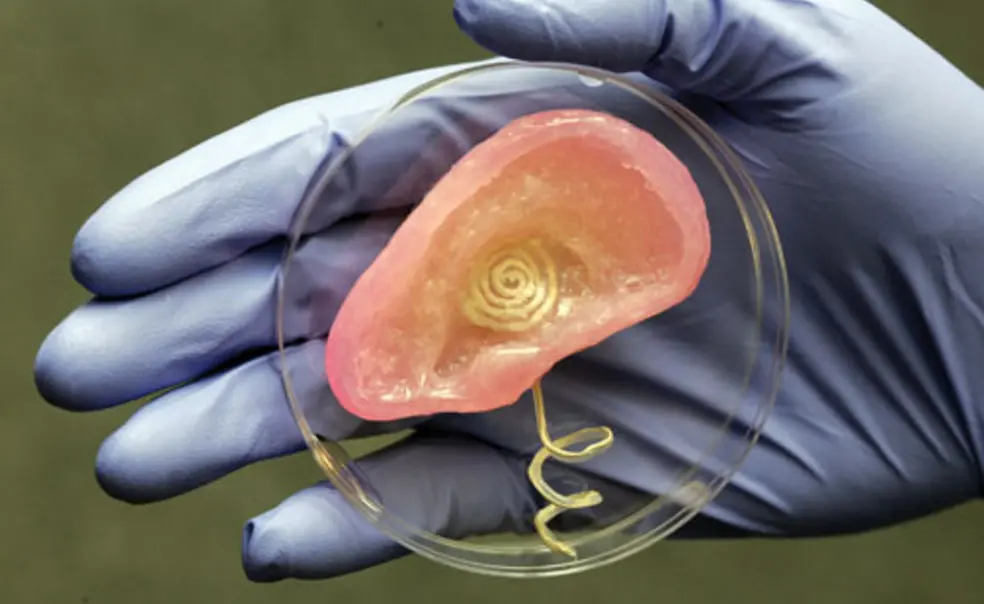Listen up: Research team uses 3-D printer to create bionic ear
Ears are one of the most difficult biological structures to reconstruct through surgery, a fact that prompted researchers led by Michael McAlpine, assistant professor of mechanical and aerospace engineering, to turn to 3-D printing to create a bionic ear.
The team used a printer to create a scaffold of cells, hydrogel, and electronic nanoparticles of an antenna to construct a functional ear that can register frequencies beyond what the human ear can hear. While 3-D printing has been used to create a range of personal and industrial objects, the bionic ear marks the first time the technology successfully has constructed an organ that merges tissue and electronics, the University said. The bionic ear requires more study and testing before it could be ready for patient use, the researchers said, but in the future it could help restore or enhance human hearing.
“This field has the potential to generate customized replacement parts for the human body, or even create organs containing capabilities beyond what human biology ordinarily provides,” the researchers wrote in the journal Nano Letters.












No responses yet